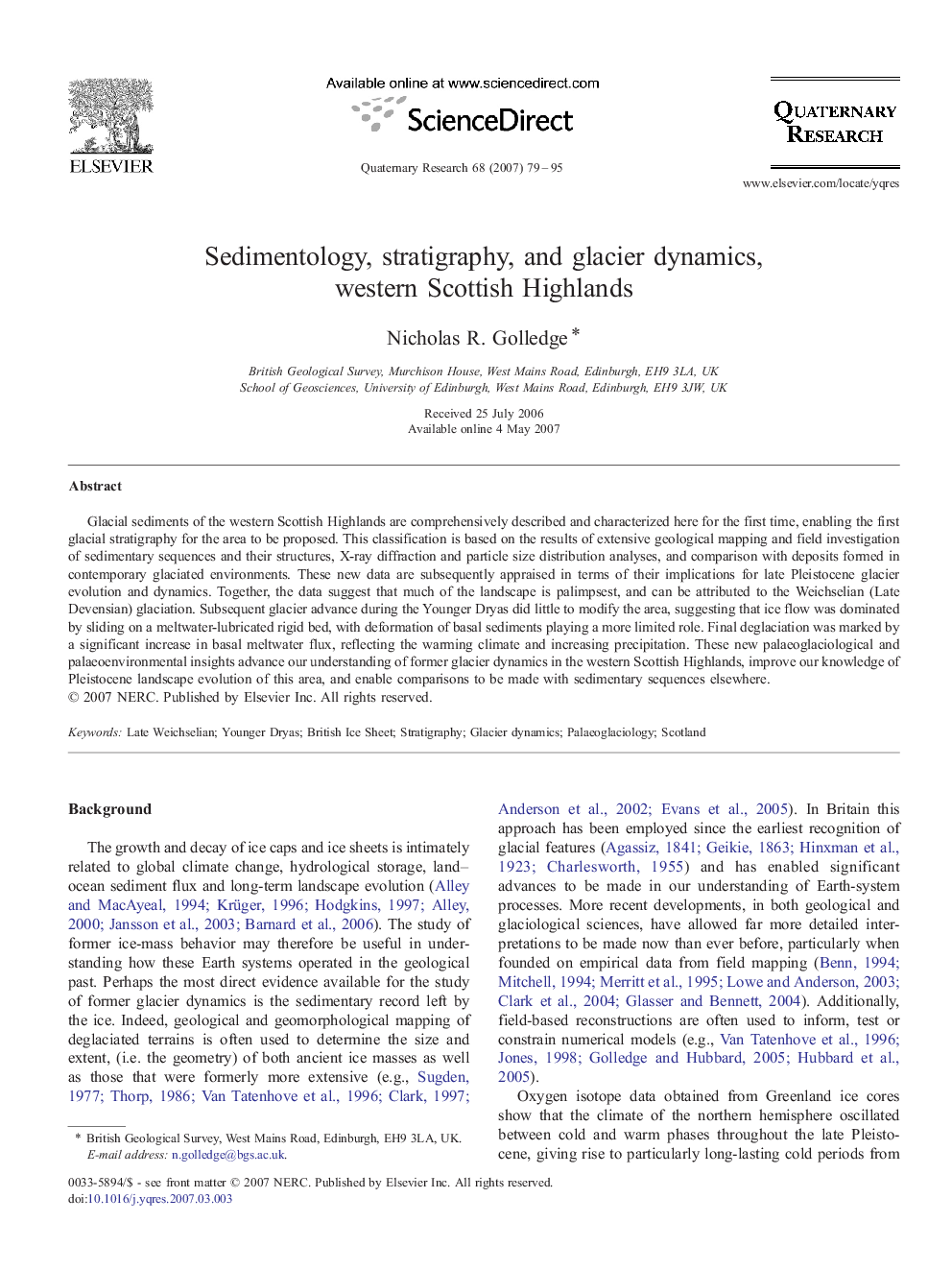| Article ID | Journal | Published Year | Pages | File Type |
|---|---|---|---|---|
| 1046199 | Quaternary Research | 2007 | 17 Pages |
Abstract
Glacial sediments of the western Scottish Highlands are comprehensively described and characterized here for the first time, enabling the first glacial stratigraphy for the area to be proposed. This classification is based on the results of extensive geological mapping and field investigation of sedimentary sequences and their structures, X-ray diffraction and particle size distribution analyses, and comparison with deposits formed in contemporary glaciated environments. These new data are subsequently appraised in terms of their implications for late Pleistocene glacier evolution and dynamics. Together, the data suggest that much of the landscape is palimpsest, and can be attributed to the Weichselian (Late Devensian) glaciation. Subsequent glacier advance during the Younger Dryas did little to modify the area, suggesting that ice flow was dominated by sliding on a meltwater-lubricated rigid bed, with deformation of basal sediments playing a more limited role. Final deglaciation was marked by a significant increase in basal meltwater flux, reflecting the warming climate and increasing precipitation. These new palaeoglaciological and palaeoenvironmental insights advance our understanding of former glacier dynamics in the western Scottish Highlands, improve our knowledge of Pleistocene landscape evolution of this area, and enable comparisons to be made with sedimentary sequences elsewhere.
Related Topics
Physical Sciences and Engineering
Earth and Planetary Sciences
Geology
Authors
Nicholas R. Golledge,
